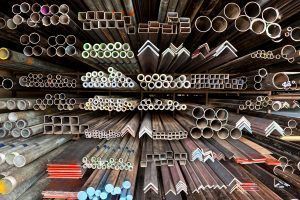A year into COVID-19, and while there are signs of a light at the end of the tunnel, we still have a long way to go when it comes to bringing back a full semblance of normalcy. Along with developing medical advancements, such as vaccines and evolving social interaction guidelines, parts of the physical world around us will need to be reimagined in order to be fully safe for occupation and to help reestablish peoples’ sense of safety while indoors with others.
As a result, the building materials industry has had to pivot to fit new and changing levels of demand, expectations of ability and overall role in the future of the commercial building industry.
The change in demand
Over the past year, the importance of appropriate and advanced building materials has skyrocketed. When building materials went on allocation previously, it was inconvenient, but rarely a breaking point. During the pandemic, a restaurant, for example, that could not acquire the materials it needed to create a comfortable outdoor dining area or modify its entrance to safely provide take-out service, may have been forced to close.
Meanwhile, schools that could not access the equipment needed to modify their HVAC design or increase the fresh air changes in classrooms were under unbelievable pressure to open and keep everyone safe, while educating.
Overall, the pressure to meet new and changing guidelines and expectations, has left organizations and properties across the country and world with a need to in-demand materials, and building material manufacturers with big, new orders to fill in record time.
Overall, the goal is that new building materials, and their uses, will help foster confidence in building occupants and allow them to eventually “worry less” about their surroundings.
The change in expectations
During this time, there also has been a greater pressure on buildings (and the materials they are composed of) to meet new health expectations. For years, the concept of healthy buildings—structures that support the general wellbeing of occupants through the materials they are composed of and the technology they harness—has been in the foreground of innovation for the industry.
When it comes to creating healthy buildings, the pandemic was, in some ways, an awakening for the building materials industry. The past year drew attention to vulnerabilities in the built-environment vertical and forced industry giants to rethink their products.
One solution for industry leading companies has been to model new products after what has already been the standard in hospitals and doctors’ offices for years, in order to meet the changing expectations for everyday building materials. For example, outside of healthcare facilities, the industry struggled with creating materials with pathogen control. Now, it is one of the topics dominating discussion.
As a result, the concept of “safe surfaces” is of top priority as we look to bring people back into commercial spaces. Meanwhile, Mechanical, Electrical and Plumbing (MEP) professionals are implementing many of the lessons learned in healthcare to the rest of the commercial sector as solutions for existing buildings and establishing it as new standards.
When it comes to creating healthy buildings, the pandemic was, in some ways, an awakening for the building materials industry. The past year drew attention to vulnerabilities in the built-environment vertical and forced industry giants to rethink their products.
The future of innovation
Overall, the goal is that new building materials, and their uses, will help foster confidence in building occupants and allow them to eventually “worry less” about their surroundings. However, since it is unlikely that the impact of the pandemic (such as a heightened awareness of germs) will not wear off in the near future, the new materials and design solutions developed because of the pandemic and consumers concerns, will become standard elements going forward.
Over the next five to 10 years, the building materials industry will continue to emphasize creating healthier indoor environments. We also will see a change in the ways these spaces are utilized. Concepts like touchless controls and means of interacting will make light switches and doorknobs seem as outdated as wired telephones.
As we pass through public spaces, we’ll make note of what we touch and ask why it is still necessary. Meanwhile, spaces may need to be able to clean themselves to some degree and hard to clean surfaces may become hard to live with.
Overall, building materials have been, and will continue to, play a critical role in our society’s ability to recover from COVID-19 by meeting growing demands, adapting to changing expectations, and continuing to innovate along the way.
The pandemic has pushed the building materials industry to innovate at a faster pace and has challenged us with creating solutions to real time problems. As a whole however, we will come out stronger.
Lucas Hamilton, Manager, Applied Building Science for Saint Gobain North America, is a physicist with 30 years of experience in construction and construction materials manufacturing. His expertise includes forensic building envelope diagnostics and testing as well as the development of non-intrusive construction analysis equipment and techniques. A practitioner of a variety of building performance simulation software, Hamilton spent the past 15 years working with builders and design professionals on behalf of Saint-Gobain to achieve more sustainable, durable and higher performing buildings.












